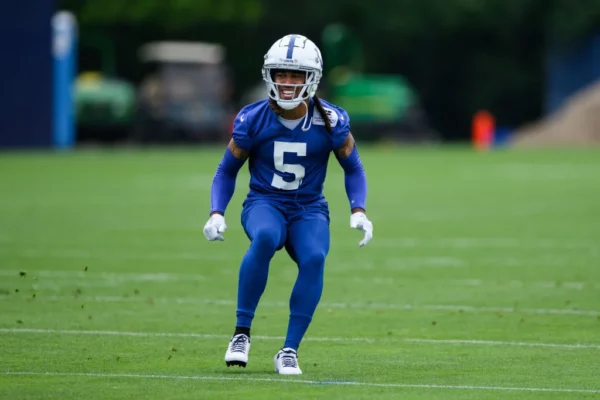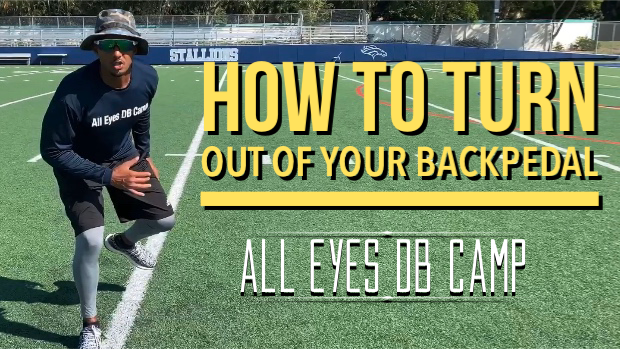While there are various techniques and skills that a defensive back must possess to be successful, one of the most critical is backpedaling. Backpedaling is the technique of moving backward, often in a diagonal or lateral direction, while keeping your eyes on the ball and the receiver. Back pedaling also includes weaving to maintain leverage on a wide receiver who is trying to stem you by running hard to your inside or outside.
There are several reasons why backpedaling is essential for a defensive back to master. The first is that it allows the defender to maintain a position between the receiver and the quarterback. This is important because it makes it more difficult for the quarterback to throw an accurate pass to the receiver. By staying in a good position, the defensive back can also react more quickly if the quarterback does decide to throw the ball. Being in a back pedal allows the defensive back to be equally effective in breaking in all directions.
Another reason why backpedaling is critical is that it helps the defender stay balanced and maintain good body control. When a receiver tries to change direction or make a sudden move, the defender must be able to react quickly while keeping their balance. Backpedaling allows the defender to do this while still keeping their eyes on the receiver and the ball. While there is a moment to open, defensive backs who open up immediately when the ball is snapped puts them at a disadvantage. Breaking to a defender’s backside is more difficult to breaking out of a back pedal. Opening closes off a defender to one particular direction.
A third reason why backpedaling is crucial is that it helps the defensive back to avoid getting beaten deep by the receiver. If a defender turns and runs full speed down the field, they are at risk of getting beaten deep by a fast receiver who can get behind them. By backpedaling, the defender can keep their eyes on the receiver and react quickly if the receiver tries to make a move to get behind them. Some may be confused by this but this relates to the point made in the previous article. When a defensive back opens up prematurely, not only does he make it more difficult to break in the opposite direction on a short to intermediate route, he also makes it easier for the wide receiver to get into his blindspot. Once in the defender’s blindspot, the receiver has the ability to go deep and get lost behind the defender. This can lead to a big play for the offense.
Benjamin St-Juste Washington Commanders @Benj_Juice pic.twitter.com/yKSD7zAktb
— DB Tips (@dbtips101) May 4, 2023
To backpedal effectively, there are several key techniques that a defensive back must master. The first is to keep the feet shoulder width apart and the knees bent. This helps the defender maintain a good athletic position and stay balanced. The second is to keep the eyes on the receiver and the ball while also scanning the field for other potential threats. This requires a high level of focus and concentration, as the defender must be able to react quickly to any changes in the play.
Another critical technique for backpedaling is to use short, quick steps. This allows the defender to move quickly and change direction if needed. Long strides are not effective when backpedaling because they make it more difficult to maintain balance and change direction quickly. For new defensive backs, this can be challenging to achieve. Consistent practice of the back pedal is required to master it at the required level.
It is also essential to keep the hips low and the weight on the balls of the feet. This helps the defender maintain good body control and react quickly to any changes in the play. By keeping the hips low, the defender can also generate more power when changing direction, making it easier to stay with the receiver. Often times, defensive backs will carry their hips high in their pedal. This can lead to your feet slipping when you break because your force when you plant will be pushing away from you as opposed to into the ground. A solid knee bend ensures that the force in your plant and push goes into the ground to propel you forward.
Backpedaling is a critical skill that any defensive back must master if they want to be successful. It allows the defender to maintain good positioning, stay balanced and avoid getting beaten deep by the receiver. To backpedal effectively, a defender must master several key techniques, including keeping the feet shoulder-width apart, using short, quick steps, and keeping the eyes on the receiver and the ball. While backpedaling is just one of many skills that a defensive back must possess, it is a fundamental one that is essential for success on the field.
Chad Wilson is the owner of All Eyes DB Camp and author of "101 DB Tips". He played college football at the University of Miami and briefly in the NFL for the Seattle Seahawks. Over his 15 year high school football coaching career, he tutored over a dozen Division I defensive backs and as a trainer has worked with NFL All Pros, first round draft picks, college football All Americans and Top 10 ranked high school football prospects.









